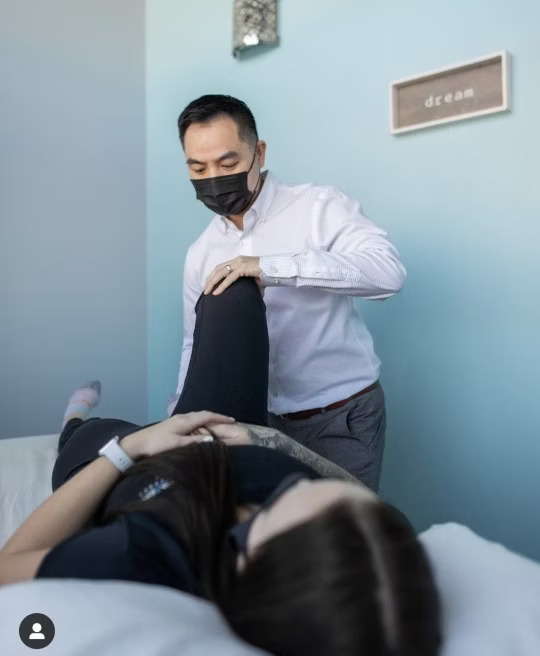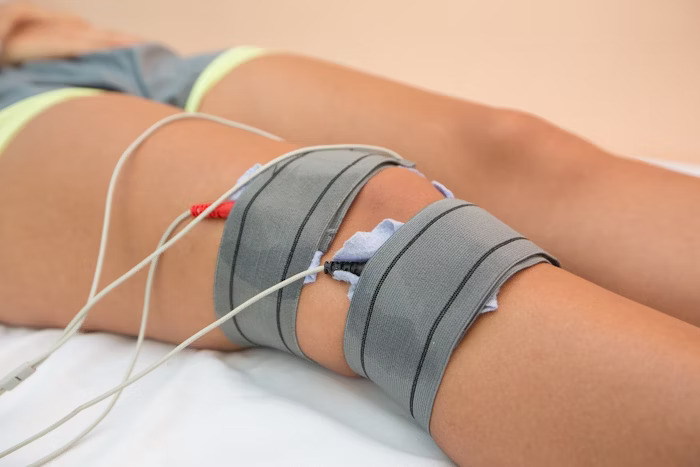
Physiotherapy is an effective, non-invasive treatment approach that addresses various types of musculoskeletal pain, including lower back pain, knee pain, and neck pain. These common issues can significantly impact daily activities and overall quality of life, making it essential to explore suitable solutions for pain management and recovery. Physiotherapy, which focuses on promoting physical function and mobility through targeted exercises, manual therapy, and rehabilitation techniques, is often recommended to relieve pain, improve movement, and prevent the recurrence of injuries. Below, we explore physiotherapy treatment for lower back pain, knee pain, and neck pain to help you better understand its benefits and what to expect during treatment.
Physiotherapy for Lower Back Pain

Lower back pain affects millions of people worldwide and can be caused by various factors, including poor posture, muscle strain, degenerative disc disease, or injuries. For many, lower back pain can become chronic, impacting mobility and limiting daily activities. Physiotherapy for lower back pain focuses on alleviating pain and improving spinal health through a combination of exercises, manual therapy, and lifestyle modifications.
During an initial assessment, a physiotherapist will examine the lower back to identify the root cause of the pain. Based on the findings, a personalized treatment plan is developed. Key components of physiotherapy for lower back pain may include:
- Stretching and Strengthening Exercises: Stretching exercises help alleviate tension in the lower back muscles, while strengthening exercises target the core and back muscles, improving spinal stability and reducing strain.
- Manual Therapy: Techniques such as spinal mobilization and manipulation can relieve muscle tension and joint stiffness, improving the range of motion in the lower back.
- Postural Correction: Physiotherapists often address postural issues, as poor posture is a leading contributor to lower back pain. Through education and guidance, patients learn proper posture and body mechanics that reduce pressure on the spine.
- Ergonomic Advice: Physiotherapists may recommend adjustments in daily activities, workstations, or sleeping positions to ensure proper alignment and reduce stress on the lower back.
In many cases, physiotherapy for lower back pain also involves lifestyle recommendations, such as incorporating low-impact exercises, maintaining a healthy weight, and engaging in regular physical activity to prevent future episodes of back pain. Regular physiotherapy sessions help improve flexibility, reduce pain, and promote long-term spinal health.
Physiotherapy for Knee Pain

Knee pain is another common issue that affects people of all ages and can result from injuries, osteoarthritis, overuse, or biomechanical problems. Physiotherapy for knee pain aims to reduce pain, improve joint function, and restore mobility through individualized treatment plans. This approach can be highly beneficial for individuals with chronic knee pain, sports injuries, or those recovering from surgery.
Physiotherapy for knee pain typically begins with a thorough assessment to understand the cause and severity of the pain. Based on the assessment, the physiotherapist creates a treatment plan that may include:
- Strengthening Exercises: Exercises targeting the quadriceps, hamstrings, and calf muscles are vital for knee stability and support. These exercises help relieve stress on the knee joint, improving overall joint function and strength.
- Stretching and Flexibility: Tight muscles surrounding the knee can contribute to pain and restricted movement. Stretching exercises focus on improving the flexibility of these muscles to enhance knee mobility and reduce tension.
- Balance and Proprioception Training: Physiotherapy for knee pain often includes balance training to help individuals regain stability and prevent further injury. Proprioceptive exercises are designed to improve the body's awareness of joint position, enhancing control and stability.
- Manual Therapy: Techniques such as soft tissue mobilization and joint manipulation can reduce knee pain, increase range of motion, and improve joint flexibility.
- Biomechanical Assessment and Correction: A physiotherapist may evaluate gait patterns and other movements to identify any abnormalities contributing to knee pain. They may recommend orthotics or modifications to footwear if necessary to provide better support for the knees.
Physiotherapy for knee pain can be an excellent solution for people looking to avoid surgery or manage pain naturally. Through consistent sessions and adherence to the treatment plan, patients often experience significant relief, improved knee function, and a reduced risk of future knee injuries.
Physiotherapy for Neck Pain
Neck pain is often associated with factors such as poor posture, stress, or sudden trauma (like whiplash), and can radiate to the shoulders, arms, or even the head. Physiotherapy for neck pain provides an effective approach for relieving discomfort, enhancing neck mobility, and improving posture.
An initial assessment helps the physiotherapist determine the specific causes of neck pain. Following this, a tailored treatment plan may include:
- Range of Motion Exercises: Gentle stretching and movement exercises help improve flexibility and alleviate stiffness in the neck. These exercises are essential for enhancing the range of motion and reducing muscle tension.
- Strengthening Exercises: Strengthening exercises targeting the neck and shoulder muscles are important for supporting the cervical spine. These exercises help improve posture and reduce the strain on neck muscles.
- Manual Therapy: Techniques such as joint mobilization, soft tissue massage, and myofascial release can reduce muscle tension, improve blood flow, and relieve pain.
- Postural Correction and Ergonomic Advice: Poor posture, especially due to prolonged use of digital devices, is a major cause of neck pain. Physiotherapists provide guidance on maintaining proper posture and ergonomics, particularly for those who spend long hours working at a desk.
- Relaxation Techniques: Physiotherapy for neck pain may also incorporate relaxation techniques, such as deep breathing exercises, which can reduce muscle tension caused by stress and anxiety.
Incorporating physiotherapy for neck pain can provide lasting relief and prevent future episodes of discomfort. With regular sessions, patients often experience improved neck mobility, reduced pain, and enhanced overall posture.
Benefits of Physiotherapy for Pain Management
Physiotherapy offers numerous benefits for managing pain in various body regions, such as the lower back, knees, and neck. The personalized approach taken by physiotherapists ensures that each patient receives targeted care specific to their needs and pain sources. Physiotherapy not only helps alleviate pain but also promotes long-term health by addressing underlying issues and preventing future injuries.
For those dealing with persistent or recurring pain, Bridgwater Physiotherapy provides comprehensive treatment plans tailored to each patient. With skilled physiotherapists and a commitment to quality care, Bridgwater Physiotherapy offers effective solutions to help you regain control of your physical health and enjoy a pain-free life.
Whether it’s lower back pain, knee pain, or neck pain, physiotherapy treatments offer a non-surgical, drug-free way to manage pain and restore function. With consistent care, physiotherapy can help you return to daily activities, strengthen your body, and reduce the risk of future pain episodes.